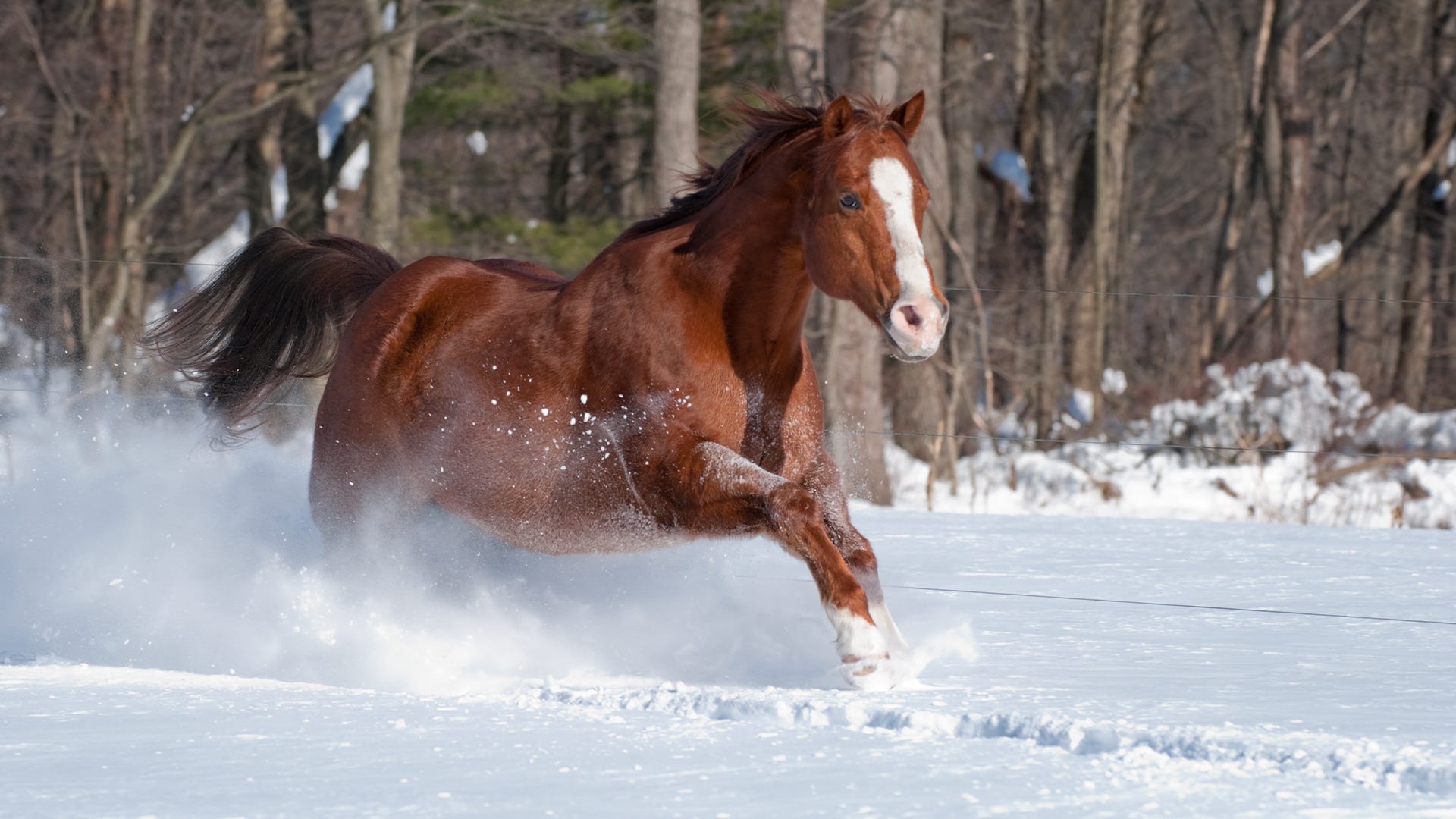
The continued safety of your horses depends on an ElectroBraid® electric fence that works properly. Routine fence checks are important year-round, but are especially important when preparing for cold, wintery weather. When the temperatures plummet, it’s not only uncomfortable to carry out fence maintenance chores, accumulating ice and snow may make viewing and accessing fencing components difficult, or close to impossible. Below is a list of checks to complete to prepare your electric fence for winter:
Visual inspection of Your ElectroBraid® Fence
In autumn and early winter, walk or travel the perimeter of your electric fence and be on the lookout for problems that can compromise the fence’s electrical circuit:
- Make sure all posts are firmly in the ground. Posts can work loose due to impacts from animals or vehicles, or as a result of heaving ground. It’s much easier to repair or install new posts while the ground is soft, before freezing temperatures arrive.
- Ensure that your ElectroBraid® line is properly tensioned.
- Remove any debris leaning on the fence or near it. Remove branches, twigs, vines, wet leaves, tall grass and vegetation leaning on or growing under the fence line.
- Trim branches or shrubs that are overhanging the fence line. If snow or ice accumulates on branches, they may crack, break and fall onto your fence and drain power from the fence.
- Inspect insulators. Leaves, grass or fur can get caught between the insulators and the fence or fence posts, causing a short. If you hear a snapping or crackling sound, or see a spark or arcing, an insulator may be cracked and need to be replaced.
Test ElectroBraid® fence voltage
A Fence tester is the most accurate way to confirm your system is operating accurately. Check the voltage between electrified fence lines and the soil below. For ElectroBraid® fencing, all readings should be over 5,000 volts (5.0 KV). It is especially important to test at high points or dry areas along your fence line.
Install Disconnect Switches on Lower Strands
Heavy, wet snow can short electric fencing. By adding cut-off switches to the bottom one or two strands of your electric fence, you can progressively turn off electricity to the bottom strand(s) as snow accumulates and buries the lower strands, and turn them back on when the snow melts.
Importance of Proper Grounding During Winter
Moist soils conduct electricity more readily than dry soils. Frozen soil has low moisture content, so it reduces the ability of the charge to make contact with the grounding rods to complete the circuit that provides the shock to your horse when it touches the fence. A solution is adding a negative (grounded) strand on your fence which connects to the negative terminal on the energizer/charger.
The grounded wire transmits electricity back to the fence instead of relying on the soil alone. When a horse comes into contact with both the hot (positive) strand and the uncharged negative strand at the same time, it will receive a corrective shock no matter how dry the soil.
Have a Back-up Power Source
Power losses during bad weather are a reality for which you must be prepared. It’s essential to have a back-up power source like a generator to keep your electric fence operational and your horses safe.
Be certain you thoroughly understand and maintain your generator so it is ready when you need it, and you know how to avoid carbon monoxide poisoning.



